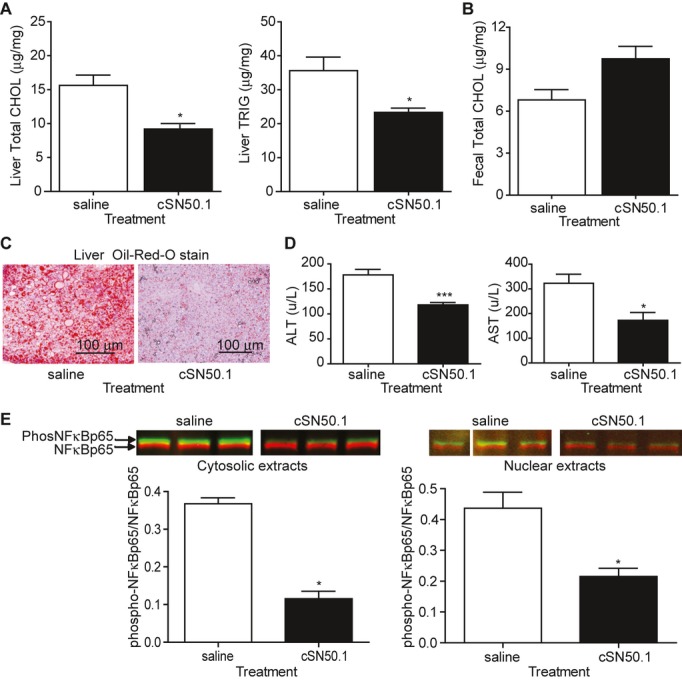Figure 3.

Lipid accumulation and markers of inflammation are reduced in the livers of NTM‐treated mice. Groups of ldlr−/− mice (n=5/group) were fed a Western diet and treated with NTM or saline control by osmotic pump for 8 weeks. Liver cholesterol and triglyceride concentrations were measured as well as cholesterol content of feces. Histological sections of liver were analyzed for lipid content, and NFκB RelA (p65) phosphorylation in cytosolic and nuclear liver extracts was analyzed by immunoblotting. Plasma concentrations of ALT and AST were determined after 4 wks. Results obtained at different time points represented separate groups of animals. A, Liver concentrations of cholesterol and triglycerides. B, Fecal cholesterol. C, Liver sections stained with Oil‐red‐O for neutral lipids. D, Liver transaminases ALT and AST in plasma. E, Immunoblots of cytosolic and nuclear extracts from control (saline) and cSN50.1‐treated mice. Shown are 3 of 5 samples for each saline‐ and cSN50.1‐treated group. Saline control lanes were spliced to remove a damaged area of the membrane, but all lanes are from the same blot for each cytosolic and nuclear extracts. Quantitative analysis of immunoblots indicate significant suppression of phosphorylated NFκB RelA (green) expressed as its relative ratio to total RelA (red) in both cytosolic and nuclear extracts. Shown are mean+SEM (*P<0.05 and ***P<0.0005 by Mann–Whitney test). NTM indicates nuclear transport modifier; ldlr−/−, low‐density lipoprotein receptor deficient; CHOL, cholesterol; TRIG, triglycerides; ALT, alanine transaminase; AST, aspartate transaminase; NF‐κB, nuclear factor kappa–light‐chain enhancer of activated B cells.
